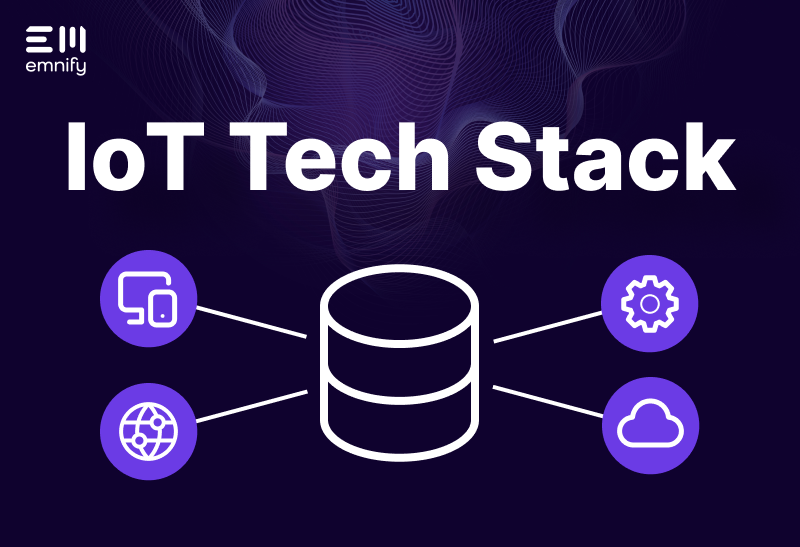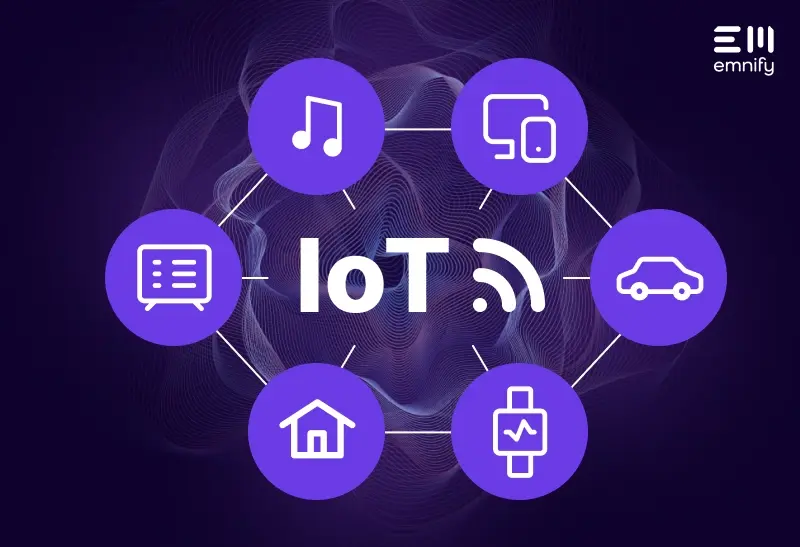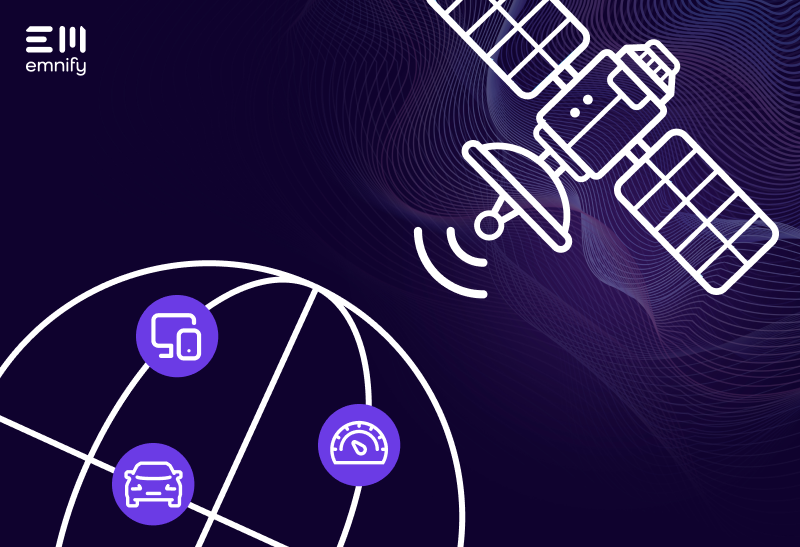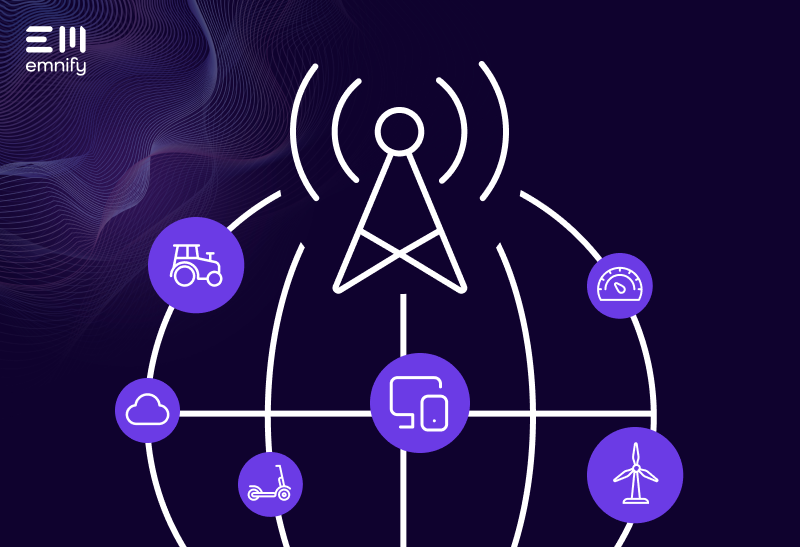

Quick Definition: The IoT tech stack is the combination of technology, equipment, and components that your IoT solution needs to operate. It includes hardware and software, as well as protocols and standards.
Even the most basic IoT devices need a range of technologies to function. Sensors, actuators, and computers use software to transmit data through a network to another device or application and vice versa. Collectively, this technology is known as the IoT stack—and it looks different for every IoT device.
“IoT stack” is a broad term that can be understood in multiple ways, which can be confusing when you don’t know how someone else is defining it. Some people use it to refer to the protocols an IoT device uses, while others mean the hardware and software components. But generally, “IoT stack” refers to every piece of technology your device needs to operate.
It’s kind of like an ecosystem, where each component, technology, standard, protocol, or device depends on and can affect the rest of the stack. Over time, you will abandon the weaker, ineffective components of your IoT stack in favor of ones that are optimized for your use cases, and your application will “evolve” to thrive in its environment.
Since there are several distinct categories of technology that build on each other to form your IoT stack, a common way to think of it is as a series of layers. (Not to be confused with the seven layers of the OSI model.) There’s no universally used delineation of these layers, but at emnify, we generally treat the IoT stack as the following four layers:
- Hardware
- Software
- Protocols
- Cloud
In this article, we’ll look at each of these groupings of technologies and discuss the role they play in the stack and how they affect your product or service. But first, let’s look at what belongs in your IoT stack.
What belongs in your IoT stack?
There’s a nearly limitless (and ever-growing) combination of technologies that could be part of your IoT stack. Many of the individual components serve the same purpose and play the same role, but the pieces you choose significantly affect your device’s capabilities and performance. And at the same time, every vendor wants you to believe that their component is essential to your application.
Your IoT tech stack is unique to your device, and it grows over time as you run into problems, discover solutions, and add capabilities. Initially, you may know exactly what you need, or you might simply use the technology your team is most familiar with. The beauty of the IoT stack is that it’s easy to exchange layers and components because they’re all separate technologies. Not everything is compatible, but most of it is interchangeable. If you wind up needing something you don’t have, you can reconfigure your tech stack around the pieces you need.
Over time, your tech stack may evolve to improve your devices’ stability or performance, add functionality, or bolster security. There may be logistical challenges you want to remove, like the need to send a technician on site to troubleshoot a customer’s problem. Or maybe the cost of components or infrastructure is too high, and swapping out parts of your IoT stack would reduce these costs without losing capabilities.
Ultimately, you have to decide what belongs on your tech stack based on your device’s needs and your business’s goals—and that will often evolve as new use cases, technology, and problems emerge.
Now let’s look at the layers every IoT stack includes.
The first layer: hardware
The hardware layer of your IoT stack encompasses the physical components of your device, such as sensors, mainboards, modules, actuators, SIM cards, antennae, and other physical pieces. This layer includes everything built into or attached to your device, as well as any other physical parts required for the operation of your device, such as modems, IoT routers, and IoT gateways.
Your hardware governs the kinds of data your device can collect, what it can do with that data, and to a degree, what firmware and protocols it can utilize. Some hardware contains firmware components. For example, a SIM card is the physical component which stores a cellular device’s Subscriber Identity Module (SIM), and it can come in several different form factors that affect your device’s size, aesthetics, and resilience.
In IoT, the hardware layer is often intended to last for the lifetime of the device, and the quality of these components can have a significant impact on your device’s lifespan. Later iterations of your device may need different hardware components to be compatible with more advanced software, firmware, protocols, and capabilities.
The second layer: device software
The device software layer of your IoT stack includes components such as your device’s operating system (OS), the application that interacts with your device and its data, and any firmware needed for your device’s OS to interact with its hardware.
Depending on the hardware and protocols in your IoT stack, some of the tech in this layer can be upgraded through over-the-air updates. This is vital for closing holes in security that emerge over time. However, some IoT businesses don’t have the right connectivity solution to facilitate these remote updates, which requires them to upgrade the software layer on-site or else leave devices vulnerable.
The third layer: protocol stack
Protocols are essentially the languages that devices and network entities use to communicate. They’re standards that determine, for example, how a temperature sensor transmits data to a cold chain monitoring application or how an accelerometer sends vibration data to a predictive maintenance application.
The protocol stack defines what kind of data your hardware can transmit and receive, how those transmissions will be secured (if at all), what kind of network the device will use to communicate, how network entities verify the accuracy of a transmission, and what your solution will prioritize (such as speed versus accuracy). Network entities need to use the same protocols to understand each other. Otherwise, their transmissions are like two humans trying to have a conversation when they don’t speak the same language.
An IoT device won’t always have the data throughput to use the security protocols and other standards your solution needs, which may make it unable to communicate directly with your application. In these instances, your solution may use an IoT gateway as an intermediary to “translate” information from one entity into the protocols the other entity understands. This is common in use cases like smart meter communication.
New protocols tend to emerge when an organization or industry faces a new problem, or advances in technology enable them to solve an old problem in new ways. Some protocols have a wide range of applications (like User Datagram Protocol), while others are made for very specific use cases (like Open Charge Point Protocol).
There may be a regulating body that keeps the protocol up-to-date and ensures it’s standardized globally, or it may be open source with no enforced universal standard. (This just means that sometimes, devices produced by different companies or in different countries may use slight variations of the protocol, which can inhibit interoperability.) Protocols can also be proprietary, built and exclusively used by a single organization.
Your IoT stack uses protocols at every layer of the network, and the hardware and software that comprise your solution may rely on different protocols for different interactions and functions. As your hardware and software changes and your device gains new functionality, your IoT stack may need to incorporate new protocols as well and/or discard ones that no longer meet your needs.
The fourth layer: the cloud
The cloud layer of your IoT stack plays a critical role in your application, particularly for businesses with large-scale deployments and international operations. It’s a combination of scalable, globally accessible data storage, management, analytics, and utilization solutions.
Whether you fully rely on cloud service providers like Amazon Web Services, Microsoft Azure, and Google Cloud Platform, or you build some portion of your cloud solution yourself, “the cloud” enables you to store all of the data from all of your IoT devices on cloud-based infrastructure, and leverage cloud-based applications to give your solution advanced capabilities like machine learning and artificial intelligence.
“Big data” is one of the things that makes IoT solutions so valuable and effective—and accessibility is another. The cloud layer of your tech stack is what brings these benefits to your device.
Integration: the key to an effective IoT stack
Your IoT stack represents a diverse, interconnected system of physical and digital technologies. While we can group these technologies into “layers,” the reality is that parts of each layer affect the others in myriad ways. The individual pieces are fairly interchangeable, but replacing one may require you to replace several others that it directly impacts.
The beauty of this amalgamation of technologies is that they integrate together, and there are often many ways to assemble a stack that works for your application. The challenge is to build the best IoT stack you can, optimizing for your business needs and use cases.
See how better connectivity improves your IoT stack
emnify is a cellular IoT connectivity provider. Our global IoT SIM cards enable your devices to connect to more than 540 networks in over 190 countries. Wherever you deploy, you’ll only ever need one SIM card per device, one SKU per product, and one connectivity management platform for them all.
IoT businesses turn to emnify for our 99.95% guaranteed uptime, superior customer support, and global, scalable solutions. We don’t just sell you parts, we become your partners, working with you to ensure your customers have the best experience with your devices.
Get in touch with our IoT experts
Discover how emnify can help you grow your business and talk to one of our IoT consultants today!

More than 7 years of experience translating hi-tech connectivity and SaaS products for Internet of Things into simple and compelling use cases across a broad range of vertical markets from manufacturing to transportation to oil and gas.


